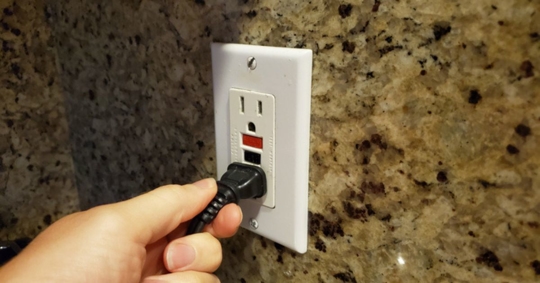Electrical outlets aren’t something most homeowners think about until they’re suddenly inconvenient—or worse, unsafe. But in homes built even a couple of decades ago, the number and placement of outlets simply don’t match today’s power demands. With everything from smartphones and tablets to smart appliances and streaming devices needing constant charging, it’s easy to see how modern life can outgrow an older electrical setup.
Adding more outlets isn’t just about convenience—it’s about safety and functionality. If you find yourself running cords across the floor, rearranging furniture just to reach an outlet, or plugging multiple extension cords into one power strip, your home may be signaling that it’s time for an upgrade. A well-planned outlet layout not only streamlines your daily routine but also reduces the risk of overloaded circuits and electrical hazards.
Identifying Power Demand in Modern Homes
Every room in your home serves a unique purpose—and that means every space has different electrical needs. The kitchen, once a simple workspace, has evolved into a multi-functional hub for cooking, socializing, and even remote work. Between countertop appliances, coffee machines, air fryers, and phone chargers, it’s easy for a single wall outlet to reach capacity fast.
Home offices present another growing challenge. Many people now rely on computers, monitors, printers, routers, and lighting in one area, pushing older electrical systems beyond what they were designed to handle. Even entertainment spaces—packed with smart TVs, sound systems, gaming consoles, and streaming devices—can demand more power than your existing outlets can safely deliver.
Ask yourself:
- Do you often unplug one device just to make room for another?
- Are cords stretching across rooms or behind furniture?
- Do power strips seem to multiply in every corner of your home?
If you answered “yes” to any of these, it’s likely your home’s power distribution no longer matches your lifestyle. Adding outlets in high-demand areas ensures smoother, safer access to power and helps prevent the frustration of constant plug juggling.
Safety and Compliance Considerations
While adding outlets may seem like a simple project, it’s essential to remember that electrical safety comes first. Overloaded outlets can overheat and cause insulation to break down, leading to short circuits or even fires. Power strips and extension cords might provide a quick fix, but they’re not meant for long-term use with high-wattage appliances or heavy electronics.
A licensed electrician can evaluate whether your current wiring can handle additional outlets or if an electrical panel upgrade might be necessary. Local electrical codes also specify where outlets should be placed—particularly in areas like kitchens, bathrooms, and outdoor spaces—to reduce shock hazards and ensure consistent safety standards. Staying code-compliant doesn’t just keep your family safe; it also protects the value of your home if you ever decide to sell.
Common Signs You Need More Outlets
You don’t need to be an electrician to recognize when your home is underpowered. A few telltale signs include:
- Overuse of power strips and extension cords in the same area.
- Outlets hidden behind furniture or placed too far from where you actually need power.
- Frequent tripped breakers or outlets that feel warm to the touch.
- Cluttered cords that make rooms look messy or even create tripping hazards.
If these issues sound familiar, adding outlets can make a noticeable difference—not only in convenience but also in safety and aesthetics. A cleaner, better-organized space is easier to maintain and enjoy daily.
Smart Placement in High-Traffic Areas
Every home has rooms that naturally demand more power. Living rooms, kitchens, and home offices are typically the biggest offenders, but even bedrooms, garages, and outdoor patios can benefit from strategic upgrades.
In open-concept spaces, for example, outlet placement should be guided by how you actually use the room—not just where walls happen to be. Think about how your furniture is arranged and where cords currently run. Installing outlets behind entertainment centers, next to seating areas, or near built-in shelving can make a world of difference in keeping your layout flexible and free of tangled cables.
In kitchens, extra outlets can improve both convenience and safety. Countertop appliances like blenders and coffee makers should have their own dedicated outlets to avoid overloading circuits. Similarly, in home offices, strategically placed outlets at desk height can make it easier to plug in monitors, computers, and chargers without crawling under furniture.
Outdoor and Utility Spaces
Outdoor and utility areas are often overlooked when it comes to outlet access, but they’re just as important. Whether you’re powering lawn equipment in the garage, hanging lights on the patio, or using tools in a workshop, insufficient outlets can quickly become frustrating. Adding weatherproof, GFCI-protected outlets ensures safe, reliable power for all your projects and gatherings.
Properly installed outdoor outlets can also elevate your home’s curb appeal and functionality. Imagine powering your holiday lights, running a sound system for a backyard party, or charging your electric lawn mower—all without a single extension cord snaking across the yard.
Why Professional Installation Matters
DIY electrical work can be tempting, especially if you’re handy around the house. But when it comes to wiring, mistakes can have serious consequences. Incorrect connections or overloaded circuits may not show issues immediately—but they can create hidden risks that surface over time.
By hiring a licensed electrician from Knee’s Electrical Service, you’re ensuring that every outlet is safely wired, properly grounded, and installed according to code. Professional electricians also evaluate your home’s existing electrical capacity, helping you avoid overloading circuits or running into bigger issues down the line. Plus, professional work offers long-term peace of mind—your upgrades will be safe, functional, and built to last.
Looking Ahead: Power for the Future
As technology continues to evolve, your home’s electrical system should evolve with it. Smart home devices, electric vehicle chargers, and renewable energy systems like solar panels are becoming increasingly common—and each brings new electrical requirements.
Future-proofing your home now by adding outlets, upgrading circuits, or even integrating USB and smart outlets can save time and money later. The right upgrades ensure your home is ready for the next wave of innovation while keeping your daily life running smoothly.
To Upgrade Your Outlets, Call Knee's Electrical Service
At Knee’s Electrical Service, we understand that reliable power is the foundation of a comfortable home. As we help homeowners adapt their homes for today’s technology-driven lifestyles, we offer expert insight and services tailored to meet your specific outlet needs. Whether you're looking to enhance the convenience of your living space, improve safety, or prepare your home for future technological advancements, we're here to guide you through every step of the process. Reach out for consultations and professional electrical work that keeps your home safe, functional, and forward-thinking.
Call Knee's Electrical Service today at (765) 201-7220 or send us a message online.

